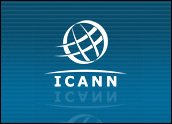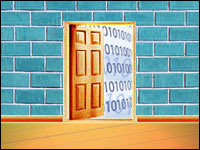
The art of copying and stealing other people’s content and ideas has settled comfortably into the mainstream across the globe. What formerly would have constituted an act of piracy is now a commonplace occurrence. Isn’t it time to give these “borrowers” a tribute, host a gala dinner and hand out awards?
Today, it is possible for anyone to borrow, copy or steal any original idea, and use it in any given format without even a slight modification. All this is performed in broad daylight with little to no cause for concern. Ideas are taken, modified and re-released — but who cares? Aren’t we too busy to notice? Or, in reality, is there really anything new to notice in the first place?
Every second major ad campaign announced these days seems to be a cut-and-paste operation from a foreign campaign, resulting in almost exact duplications. The same holds true for foreign TV commercials and even the movies. Just change the angle, slightly twist the logo, randomly insert letters here and there in the name, add some local flavor — and voila! a “new” identity is created.
With millions of look-alike Web sites mix-and-match logos, is who owns what a matter of critical importance?
The Demise of Ownership
There is no reason one shouldn’t have a clear image and name identity that is 100 percent original and 100 percent owned.
Are we becoming so complacent about stealing movies, downloading music and buying bootlegged merchandise, that we are losing the value system that formerly protected the sanctity of original ideas and rewarded creativity?
The bar of creativity was once raised as a subject for study and observation, but that bar has now been taken down. We are left with a continuously recycling branding process, in which new identities are created, then expire and are rebuilt.
If it were possible to graphically chart creative development — including slogans, branding ideas and corporate identities — the result would clearly show that innovation is almost dead. Decades ago, a fresh new idea would spark hundreds of others in a competitive creative race. One-upmanship was a source of pride, and victors were respected — but not copied.
Today’s TV shows, newspapers, magazines, billboards and media, in general, are generic reconstructions of numerous borrowed ideas, often communicating stale and redundant messages.
Television shows have been streamlined into a new genre of “reality-idol-panicky-eco-friendly-sexy-smart-politically-correct” — all from the creators of a similar mess of overused ideas and subplots. From video-trailer mashing to the recreation of comic books and old comedies, hunting season is now open.
Three Reasons
There are three major factors driving the current dismal state of creative affairs:
Low Entry Point: The global glut of advertising and Web-based cyberbranding has made it necessary for big and small companies around the world to feel obligated to play the global marketing game. To accommodate such an appetite, a junior staff with enough training to know how to cut and paste graphics on the Internet is more than sufficient to launch a major advertising campaign. The new announcement would be an embarrassment if it were projected toward the global realm. Yet in small foreign markets, a copied idea can flourish.
Dilution: In the massive jungle of competition between brands and identities, smaller firms are simply blinded by their short-term fireworks and mesmerized by small-scale success. Should a project develop into a larger, more noticeable venture, possibly triggering a trademark lawyer from the original party to take action, there is always the option of simply dropping the identity and assuming a new one. This is far too common, and explains why current name identities are stale and fail to carry much value.
Value: The credibility gap in creative services has not only confused customers, but also made them hesitant to pursue the option of paying for high-value creativity and branding ideas — the type that stand out like trophies in the midst of a junk heap of recycled, rearranged metal. Ad agency executives rate about the same as used car salesmen in terms of trust and confidence, according to recent Gallup polls. Businesses are closing their doors to long-term originality, and basking in the temporary success of cheap, hit-and-run thrills.
Winners and Losers
With easy accessibility to technology and user-friendly software, emerging economies are bursting at their seams. A billion new copycat enthusiasts are due to arrive over the next few years. Ultimately, they will overwhelm and overrun the rare gems and gatekeepers of creative industry who have cultivated and polished their identities over time. As global standards are lowered by the second, the losers will be the recipients of these short-lived firework displays, as their investments jump from one recycled idea to another.
There will always be a small percentage of smart businesses that monitor the global trends and will be able to recognize when their image brands are on the right path, or when they are being taken for a joyride. The course is tough for all, so fasten your seat belts.
Global image building and unique identity development in any area are becoming lost arts, but wise strategists will seek a long-term game plan, will remain unmoved by the simplicity of brand recycling, and will continue to plot and develop new, original ideas. They are the ones that will have secure, iron clad images, and name identities with 100 percent absolute ownership.
Naseem Javed is recognized as a world authority on Corporate Image and Global Cyber-Branding. Author of Naming for Power, he introduced The Laws of Corporate Naming in the 80s and also foundedABC Namebank, a consultancy established in New York and Toronto a quarter century ago. Currently, he is on a lecture tour in Asia and can be reached at[email protected].




















































Social Media
See all Social Media